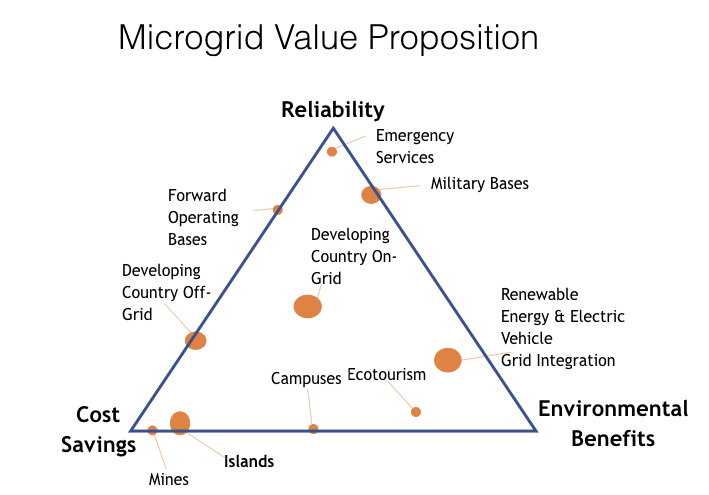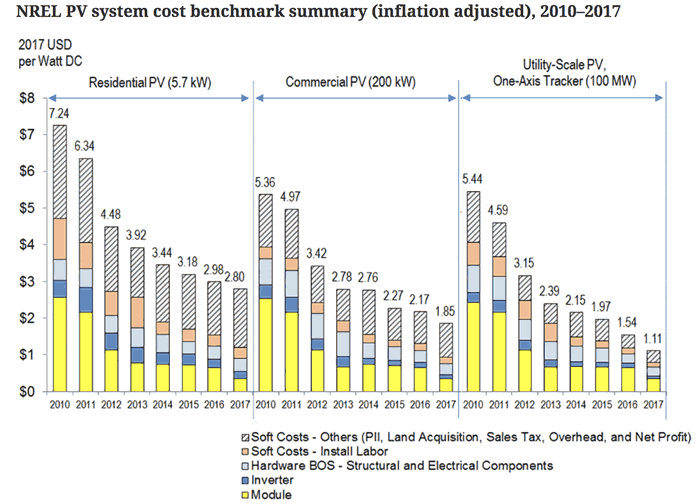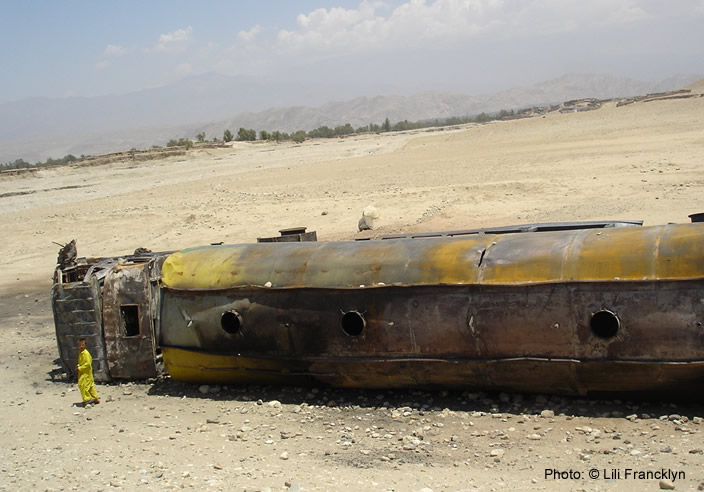Six years ago we wrote a blog post about Microgrid Value Propositions. A lot has happened in six years, including multiple extreme weather events that severely challenged the resiliency of our electric grid, and a dramatic drop in the cost of solar and storage. It is time to update this post about microgrid value propositions and broaden its scope to a discussion of distributed generation, of which microgrids are a particularly interesting subset.
 When we wrote the original Microgrid Value Proposition blogpost, demand for HOMER Energy consulting and software was coming mainly from developing countries, where people are desperate for access to reliable electricity, and tens of thousands of island power systems that burn diesel 24/7. That is still the case, and there are still thousands of HOMER Pro users designing microgrids for small, remote villages and expensive, unreliable grids throughout Africa, Asia, Central and South America.
When we wrote the original Microgrid Value Proposition blogpost, demand for HOMER Energy consulting and software was coming mainly from developing countries, where people are desperate for access to reliable electricity, and tens of thousands of island power systems that burn diesel 24/7. That is still the case, and there are still thousands of HOMER Pro users designing microgrids for small, remote villages and expensive, unreliable grids throughout Africa, Asia, Central and South America.
But, unmistakably, something new has happened. Now people are calling microgrids “the technology that is poised to transform electricity.” Across the United States and Europe, there is a sudden surge of interest in microgrids. Although microgrids have been around since Edison’s time, more people are beginning to understand the benefits now. This is partly because of extreme weather events and the long, economically devastating power outages that they’ve caused; it’s partly because of the remarkable growth of distributed renewable energy, and now, the plummeting price of energy storage. As a result of all these trends, new value propositions for microgrids are emerging.
First, the ever-elusive definition of a microgrid
Some microgrid organizations, such as the U.S. Department of Energy, restrict the definition of a microgrid to a grid-connected power system that is normally grid-tied but capable of operating autonomously – electrically “islanded” or cut off from the main grid. At HOMER Energy, we use a more general definition of any power system that is capable of operating autonomously, including those that are always autonomous. Technically speaking, the diesel power systems historically used in remote areas and islands are expensive, but not very interesting microgrids.
Microgrids that use combinations of conventional and renewable generation technologies, coupled with storage and load management, have the potential to provide reliable power that can be cost-competitive with power from centralize systems and more resilient against supply disruptions. Although solar, storage, and reciprocating engines are the most common technologies used in microgrids, there are numerous examples using combined heat and power systems, micro-turbines, wind turbines, and fuel cells. Digital controls that manage loads and dispatch the different generation resources are the key to efficient operation of a microgrid. Microgrid sizes can vary wildly, from a single building, to an entire island. There is even interest in networking multiple smaller microgrids into a larger system. While simple backup generators can provide occasional service for a few hours, HOMER Energy specializes in designing hybrid microgrids. These are systems that can integrate multiple types of power generation sources – including renewable energy – in optimal combinations to provide reliable power for extended periods, if not indefinitely.
Microgrid Value Propositions
Over the past decade, we’ve written about three distinct value propositions that are still useful and relevant for segmenting microgrid markets: increasing reliability, cutting costs, and providing environmental benefits. That still holds true but as the market for microgrids grows, we are seeing a greater variety of use cases. The value propositions for hybrid renewable microgrids – and the more general use of distributed energy resources they embody – are:
Microgrids for reliability
Because most electric service outages are caused by disturbances in the electric distribution system, the only way to avoid these outages is to locate electric generation and storage at the end user’s location. Users with a need for high reliability have always had local backup systems. These were typically battery-based, uninterruptible power systems (UPS) for small loads and reciprocating generators powered by diesel, propane, or natural gas for larger loads. Keeping backup generators fueled has been one of the greatest challenges during recent experience with extended outages over large areas. Hybrid microgrids integrate these legacy systems with digital controls, load management, and renewable power systems. This results in cleaner and more efficient systems that can operate for extended periods without fuel deliveries.
Microgrids for cost savings
(1) Remote loads (and think islands too) lack pipeline access to natural gas and are often too small to take advantage of the economy of scale of large coal or nuclear generation facilities. As a result, they rely on expensive diesel and fuel oil for power generation; in many remote locations fuel delivery can be at risk due to weather, security and other factors. This makes hybrid renewable power systems very cost competitive. Over 5 million barrels of oil is consumed every day for power generation at a cost of $110 billion per year.
 (2) Solar and energy storage prices are declining rapidly, making renewable generation competitive with non-renewable fuels.
(2) Solar and energy storage prices are declining rapidly, making renewable generation competitive with non-renewable fuels.
(3) Finally, combined heat and power (CHP) systems can be very cost-effective, but only if the thermal energy can be used on-site. Since most thermal loads are small relative to the thermal energy potentially created by a large generation plant, those large plants usually throw away the thermal energy that they create. By reusing that thermal energy, smaller CHP systems can provide lower cost power through fuel savings.
(4) Whether shaving peak demand and helping commercial and industrial customers avoid demand charges, helping utilities avoid expensive transmission upgrades, or shifting loads to cheaper times of the day, the cost-saving benefits of storage – either in grid-tied distributed power systems or as part of microgrids – are cropping up in many states.
Microgrids for environmental benefits
Renewable power is the fastest growing source of power and it is reducing the use of fossil fuels and their resulting emissions. Within large power systems, the variability of solar and wind is starting to constrain their adoption, unless we add storage to the equation. Deployed as distributed storage in a microgrid, advanced energy storage can not only allow the integration of high penetrations of renewables but also provide a reliability benefit that is unachievable through centralized storage deployments. Many remote microgrids are now demonstrating the ability to utilize energy storage to integrate these very high penetrations of renewable power.

Generators line the streets in Jalalabad, Afghanistan
Value propositions for microgrids in remote locations
Energy Access: Village Power in Developing Countries
Over one billion people still have no access to electric power. Remote villages are often too small to be served by conventional utility grids, or their utility service is intermittent and unreliable. This is the original market that HOMER Energy has been serving for 25 years. The most isolated loads can only be served by solar home systems but many villages, especially ones with existing diesels that run for a few hours in the evening, can have 24-hour power with a hybrid renewable microgrid. Though this was not a commercially viable market only a few years ago, the economics are improving as the price of solar-plus-storage systems continues to drop. As a result, many countries struggling with energy poverty are counting on hybrid microgrids to reach new energy access goals without increasing their reliance on diesel fuel. New microgrids in Haiti are now bringing electricity to communities that have had no access to electricity at all.
Commercial Facilities and Upper Income Households in Developing Countries
Most electric utility grids in developing countries are not reliable enough to meet the needs of commercial facilities and middle to upper income households. Millions of small, polluting generators line the streets in the developing world, where they operate every day. These generators operate frequently enough for hybrid renewable microgrids to be cost-effective based just on the reduced fuel and maintenance costs.
Islands
There are tens of thousands of inhabited islands in the world. Due to the expense of shipping of fuel to islands, the cost of power ranges from $0.40 – $2.00 per kWh, compared to an average of $0.11 per kWh in the lower 48 US states. Islands are ideal candidates for hybrid renewable microgrids because they often have excellent solar and wind resources and an existing utility to manage the system. Volatility in fuel costs and availability – plus the improving economics of renewable energy – have motivated island governments to explore diversification of their energy portfolios during the past few years. Hawaii for example, has had the most expensive power in the US, and is now a national leader in renewable energy penetration and microgrid innovation. Also, as it rebuilds its energy infrastructure after a devastating hurricane, Puerto Rico is exploring a 21st century utility with hybrid renewable microgrids to replace fossil fuel-burning central power plants. This is being replicated in island power systems around the world. Just a couple of examples are King Island. Tasmania, Kodiak Alaska, the Caribbean island of Aruba and hundreds of others.
Mines, Oil & Gas and Telecommunications
Mining, oil and gas extraction, and telecommunications companies have strong incentives to manage energy costs and improve reliability for their remote industrial locations. Diesel-powered generation is costly and logistically difficult, so these users have both strong incentives and the financial resources to implement hybrid microgrids.
Ecotourism
Ecotourism resorts are a small but ideal market for hybrid renewable microgrids. Many are located in remote and pristine areas without access to utility grids. Diesel generators are incompatible with their desired marketing image and guest experience.

This petrol tanker in Afghanistan was attacked by the Taliban.
Military Bases
Permanent military bases are a special case because the Department of Defense has established distinct goals for them to be able to operate autonomously for extended periods. As federal facilities, they also have renewable mandates to meet. Of all institutions exploring the value of microgrids, the military is one of the most committed.
Forward operating bases have the most compelling rationale for microgrids because fuel deliveries often represent an extreme logistical challenge that jeopardizes the safety of the soldiers transporting the fuel and potentially limits the ability of remote units to fulfill their missions. The majority of the casualties in Iraq and Afghanistan have been associated with fuel convoys. Without even considering the human cost, the simple economics of fuel delivery makes hybrid renewable microgrids extremely cost-effective.
Part Two of this series, “Microgrid Value Propositions Part Two“ explores emerging microgrid value propositions, many of which are tied to the rapidly declining prices of renewable energy and storage options in industrialized countries, as well as new digital enabling technologies.
Whether we are designing, developing, financing, building or marketing renewable energy, storage systems or microgrids, we are all contributing to this revolution in the energy marketplace. If you want to learn more about microgrids, we welcome you to try some experiments with our free online tool HOMER QuickStart. Built upon the HOMER engine, HOMER QuickStart is a good way to get introduced to the capabilities of our full-featured microgrid modeling and simulation software HOMER Pro.

